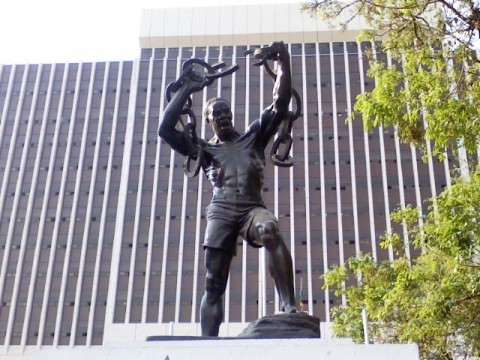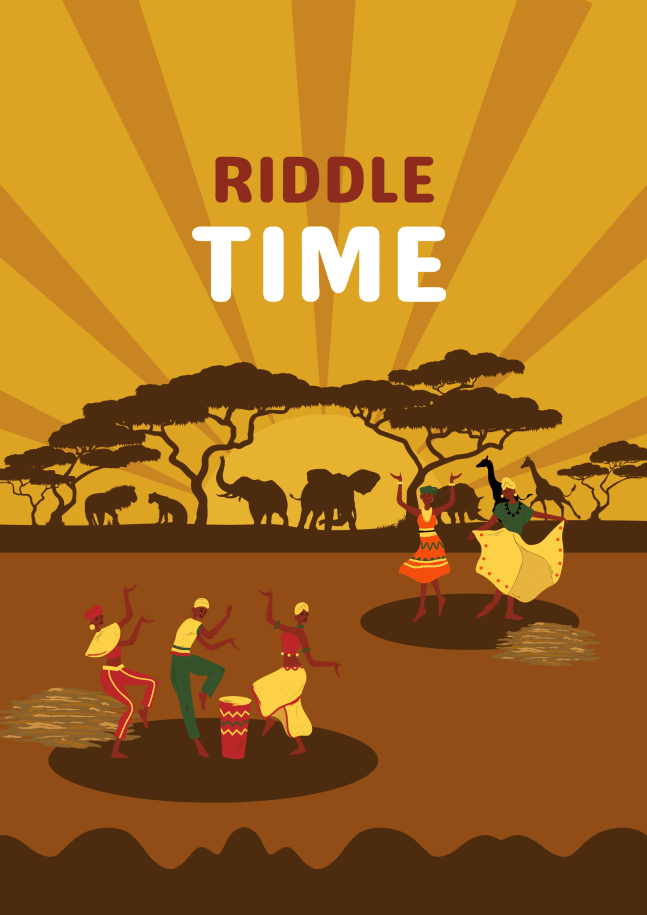If you are new here, welcome to the second-best thing in the world!
The only thing that could top reading this newsletter is the guilty pleasure I felt as a kid, smoking dried Lantana camara and pawpaw leaves wrapped in newspaper. (Don't ask how we came up with that recipe.)
Every week, we share stories on African history and culture, along with a puff of language learning resources and tips.
Let’s dive in!

Almost, or maybe all countries in Africa, have a statue in any of their cities to honor their freedom fighters.
In Kenya, there’s a statue of Dedan Kimathi in Nairobi, in honor of the man who led the Mau Mau while fighting against the British. There’s also a statue of 3 KAR (King’s African Rifles) who carried the equipment of the British soldiers during the two World Wars.
In Tanzania, there’s the ‘Askari Monument’ in Dar-es-Salaam, which depicts an armed bronze soldier from World War One, pointing his bayonet towards the harbourfront, and commemorates the role played by African troops during the conflict lasting from 1914 to 1918.
In South Africa, there are numerous statues. The most notable one is the ‘Long March to Freedom’, which contains the statues of at least 100 anti-apartheid heroes, including Nelson Mandela, Walter Sisulu and Oliver Tambo.
Today, we’ll be discussing the most popular in Zambia. Situated along Independence Avenue in Lusaka, just right in front of the government offices, is a statue depicting a man breaking free from chains using his hands.
The statue was unveiled on 23rd October 1974, marking 10 years since Zambia gained independence. It was also included in the Zambian currency, the Kwacha. It was used to symbolize Zambia’s freedom from the British colonial regime.
But who exactly is the person in the statue?
To answer this question, we have to go back in time, 88 years back.
In the year 1936, a child known as Mpundu Mutembo was born in Mbala village, Northern Province. He dutifully went to school, until the untimely death of his father in the early 1950s. Left with no other option, he joined the freedom struggle as a teenager.
By 1957, he had already proven to be a proper freedom fighter, and so, together with seven others, he was sent to Kenya to study the mannerisms of the Mau Mau. The goal was to learn how to carry out a rebellion at home.
When he came back, he joined the likes of Kenneth Kaunda, Kapwepwe Mwansa and Kapasa Makasa in the frontline battle for independence. Together, they would move around the country, preaching the liberation gospel. It was they, too, who coined the name ‘Zambia’. The initial idea was to call it ‘Zambezia’, after the grand river Zambezi that passed through their country.
Being the bravest among the freedom fighters, he would be sent ahead to relay the message to the people, as well as pass any message to the colonialists. For example, in 1960, Kenneth Kaunda had written a letter to the Colonial Governor, Sir Arthur Benson, to protest the clauses in the constitution that gave the British an upper hand in the Legislature.
It was Mutembo who volunteered to personally deliver the letter to the Governor’s office. On his way out, however, he was arrested and tortured, before finally being released in the evening.
The next day, he went back to the streets, early in the morning, to continue with the liberation struggle. He would climb up a tree, and using his megaphone, tell the citizens that they should denounce the new constitution. Within no time, he was surrounded by police officers, who threatened to shoot him if he did not come down. Once again, he was arrested and beaten up.
When he appeared before the court, the judge asked him to demonstrate how he had been beaten. Mutembo got up from the section where he was, walked across the courtroom to where the prosecutor – a white man – was, and punched him in the face, leaving him with a bloody nose.
This was, of course, taken to be an act of rebellion against the colonial government, and thus, he was sentenced to 10 years in prison, plus four lashes every day for punching the prosecutor. He was taken to Livingstone State Prison. While he was in prison, he was forced to witness the execution of three men who had been charged with the murder of a white man. This was intended to be a lesson to him.
On the eve of the New Year (31st December 1963), with independence being imminent, the Governor asked Kenneth Kaunda what he’d like to be the symbol of the new nation. Kenneth Kaunda quickly mentioned Mpundu Mutembo. It was then resolved that he, Mutembo, would die for the nation.
Later that day, Mutembo was driven by the Governor in his official vehicle together with a police escort, to the Police Force Headquarters. There, he was taken to a room where 18 military officers stood with their guns ready. He was then handcuffed to a chain and ordered to break free or get shot. To everyone’s shock, he pulled the chains so hard and broke free.
It resembled the moment in the Bible, Judges Chapter 16 Verse 23, when the Philistines had, after a long time, captured Samson, gouged his eyes out and imprisoned him. The Philistines, however, wanted to be entertained, and so, they called for Samson to be brought out to the Temple and be placed in their presence.
There, he was placed between the two central pillars, and muttered a prayer to God, saying, “Sovereign Lord, remember me. Please, God, strengthen me just once more, and let me with one blow get revenge on the Philistines for my two eyes.” He then reached out to the two central pillars, and with his right hand on one and the left hand on the other, he pushed the pillars with all his strength. Down came the temple with all the rulers and people in it.
In the room, too, were photographers who captured the moment in which Mutembo seemed to possess a magical power. The Governor was in awe too, and exclaimed that Mutembo would now be the symbol of the nation. It was from the photos taken that day, that the Freedom Statue in Lusaka would be sculpted.
Every year, people head over to the statue on Independence Day and lay their wreaths there, in commemoration of the forefathers who fought for independence. While the statue gets enough recognition, the man after whom it is depicted hardly gets any, and died as a pauper in May 2021.
Mpundu Mutembo – the African Samson.
Language Learning
Language learning, especially as an adult, is tough!
How would I know? Well, I’ve been talking about learning Gikuyu for a while now. Funny enough, it was actually the motivation behind starting Lughayangu. I’d start learning, get distracted, and stop after a week or two. But in the past 3 months, I’ve decided to take it seriously.
Finding the time, dealing with frustrations, and accepting that you don’t know as much as you’d like—it all takes a lot of humility.
I am not yet fluent or even conversational, but I am getting there.
Good luck to you if you decide to talk over my head in Gikuyu, thinking I won’t catch on.
So, what’s been working for me so far?
(i) Having a tutor - I do one-hour sessions, four times a week. This is especially helpful for pronunciation and getting immediate feedback.
(ii) Common phrases and Gikuyu-related articles/stories - Learning that once you understand the 100 most commonly used words in a language, you can bluff your way through the rest, and others can often deduce your meaning from context.
(iii) Gikuyu dictionary - I didn’t truly appreciate how useful Lughayangu has become until I had to use it as a reference. Whenever I encounter a new Gikuyu word, Lughayangu comes to the rescue by not only explaining the meaning but also giving me context on how to use it in a sentence. The only critical feature I feel is missing is the pronunciation feature. ( Work in progress for now).
(iv) Listening to Gikuyu radio station. Shout out to Kameme and Inooro FM (This is not a plug 🙂)
There you go. It’s hard but simple- if you know what i mean.
New Language Learning Resources
Special thanks to Keith Ang'ana for contributing to this newsletter.
Join the Lughayangu Community!

